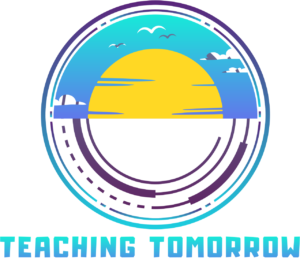
Education is the cornerstone of progress, and at the heart of education lies curriculum development. A well-designed curriculum plays a pivotal role in shaping the future by equipping students with the knowledge, skills, and attitudes necessary to thrive in an ever-changing world. In this blog post, we will delve into the key strategies for designing and implementing impactful curriculum to drive educational progress.
Understanding Curriculum Development
Curriculum development refers to the process of designing and organizing a comprehensive plan for teaching and learning. It involves carefully crafting the content, structure, and methods employed in the educational system. Effective curriculum development is crucial for fostering meaningful learning experiences and preparing students for the challenges they will face in the future workforce.
Identifying Goals and Objectives
To create an effective curriculum, it is essential to start by identifying clear goals and objectives. Educational goals provide the overarching vision, while objectives define the specific outcomes students should achieve. Well-defined learning outcomes help guide the curriculum development process and ensure that it aligns with the desired educational goals.
Setting realistic and achievable goals involves considering factors such as the students’ age, abilities, and prior knowledge. By establishing clear objectives, educators can tailor the curriculum to meet the specific needs of the learners and facilitate their progress.
Conducting a Needs Assessment
A needs assessment is a systematic process of gathering and analyzing data to understand the requirements and preferences of students, educators, and the broader community. By conducting a thorough needs assessment, curriculum developers can gain valuable insights into the learners’ backgrounds, interests, and learning styles.
Various methods can be employed to collect data, including surveys, interviews, and focus groups. Analyzing the findings of the needs assessment allows curriculum designers to identify gaps and areas for improvement, ensuring that the curriculum addresses the specific needs of the learners and the community it serves.
Designing a Framework
Once the goals, objectives, and needs have been established, it is crucial to design a framework that provides a structure for the curriculum. Curriculum models and frameworks serve as guiding principles, helping curriculum developers organize and sequence the content effectively.
Selecting an appropriate curriculum model involves considering factors such as the educational philosophy, learning theories, and the needs of the learners. Additionally, designing a framework that supports the integration of core subjects and promotes interdisciplinary approaches enhances the students’ holistic learning experience.
Developing Learning Materials and Activities
The choice of learning materials and activities significantly impacts student engagement and the effectiveness of the curriculum. It is important to select or create resources that align with the curriculum’s objectives and cater to the diverse learning styles of students.
Engaging and interactive learning activities stimulate critical thinking, creativity, and collaboration. Integrating technology into the curriculum can further enhance the learning experience by providing access to multimedia resources, online research tools, and interactive simulations.
Implementing and Assessing the Curriculum
Implementing the curriculum effectively requires careful planning, collaboration, and ongoing monitoring. It is essential to create a supportive environment that encourages teachers to embrace the curriculum and implement it with fidelity.
Monitoring the curriculum’s progress and making necessary adjustments based on feedback and assessment data are crucial for its continuous improvement. Regular formative and summative assessments provide valuable insights into student learning and allow educators to evaluate the effectiveness of the curriculum in achieving the desired outcomes.
Collaboration and Professional Development
Collaboration among educators, curriculum designers, and other stakeholders is vital for successful curriculum development. By working together, they can share ideas, resources, and best practices, leading to more robust and comprehensive curricula.
Investing in professional development opportunities for curriculum designers and teachers is also essential. Training programs, workshops, and conferences enable educators to stay updated with the latest research, teaching methods, and technological advancements, fostering continuous growth and improvement in curriculum development.
Challenges and Solutions in Curriculum Development
Curriculum development is not without its challenges. Limited resources, time constraints, and resistance to change are common hurdles that educators and curriculum developers face. However, by acknowledging these challenges and implementing solutions such as prioritizing collaboration, seeking external support, and promoting open communication, it is possible to overcome these obstacles and create effective curricula.
Case studies and examples of successful curriculum development initiatives can serve as inspiration and provide practical insights into how challenges were addressed and overcome. Learning from these experiences can inform future curriculum development endeavors and contribute to the collective growth of educational practices.
Takeaway
Crafting the future of education relies heavily on effective curriculum development strategies. By understanding the significance of curriculum development, setting clear goals and objectives, conducting needs assessments, designing comprehensive frameworks, and creating engaging learning materials, we can shape a curriculum that empowers students to thrive in an ever-evolving world.
Implementing and assessing the curriculum, fostering collaboration, and addressing challenges through continuous improvement are vital for ensuring the success of the curriculum development process. By embracing these strategies, we can create a brighter educational future and provide students with the tools they need to excel and make a positive impact in the world.





